This article was updated on September 17th, 2023
As a seasoned veterinarian, I’ve encountered many cases of fungal skin infections in dogs, most of which are mild. I typically see these infections in atopic dogs who deal with skin allergies and ongoing skin infections or ear infections.
To help pet owners understand and identify these conditions, I’ve curated an in-depth review featuring pictures of the most common fungal infections.
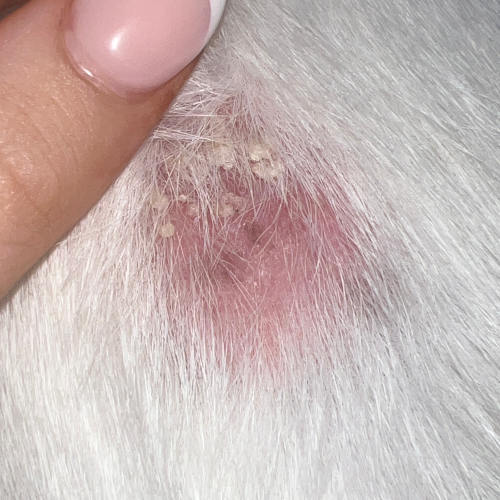
This guide aims to arm you with the knowledge to spot early signs and seek timely intervention for your beloved pets. Keep in mind that it is always challenging to diagnose a skin issue just by looking at it, so make sure that you do reach out to your veterinarian to find the right treatment plan.
Pictures of common fungal infections in dogs
1. Ringworm
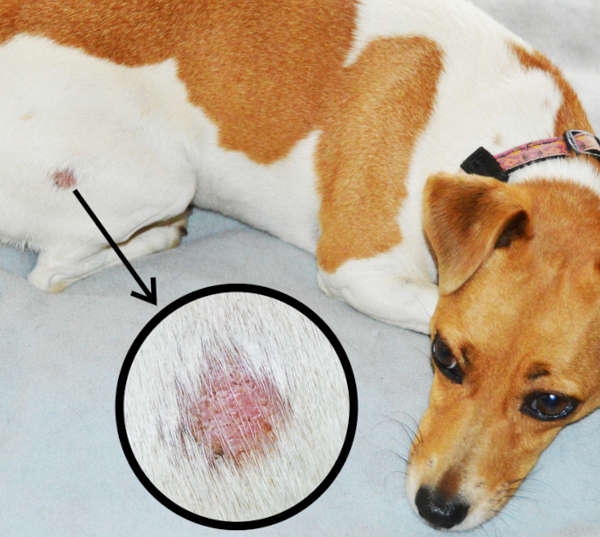
Ringworm is a fungal infection which is often spread from kittens or livestocks to our dogs. We can see a red ring of flaky skin and dogs are typically affected on the face, legs and paws. Itching is not usually a feature. From home, we can use a medicated wash such as Hibiscrub to clean the lesions. However, a vet check is needed to confirm the diagnosis and most vets will issue a cream or topical liquid to ensure the infection clears up soon, which minimises the risk of the people and other pets in the home becoming infected. Below are more pictures of ringworm on dogs:
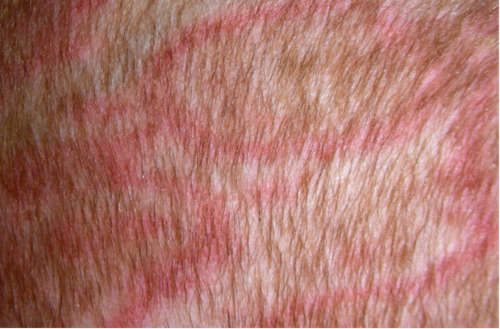
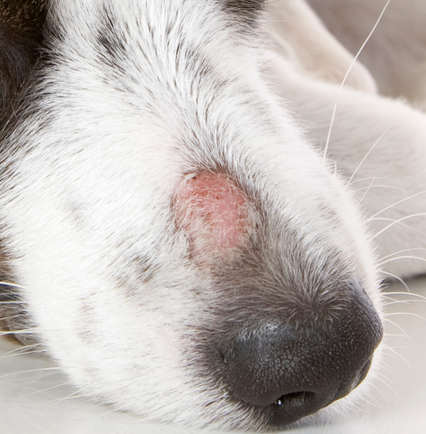
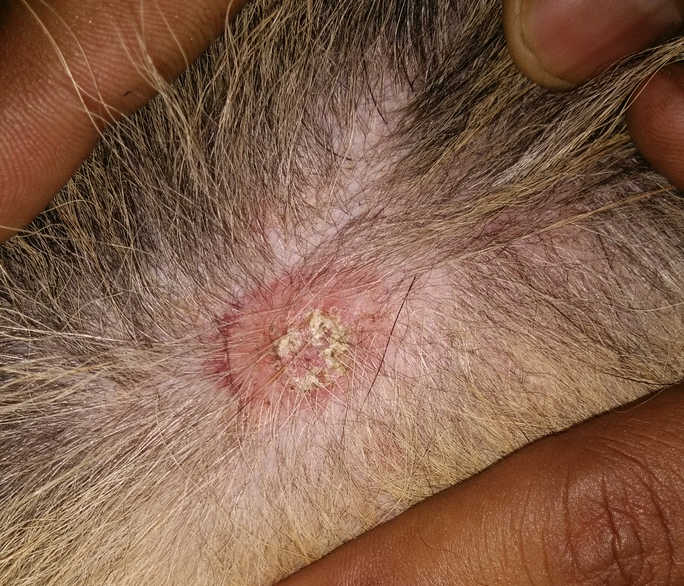
View more pictures of ringworm.
2. Malassezia overgrowth.
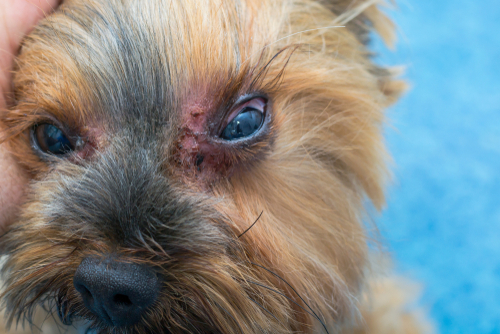
Malassezia overgrowth leads to crusting and scaling and a must smelly. We find the armpits, groin and skin folds tend to be affected. Certain breeds such as the Westie are known for developing these infections.
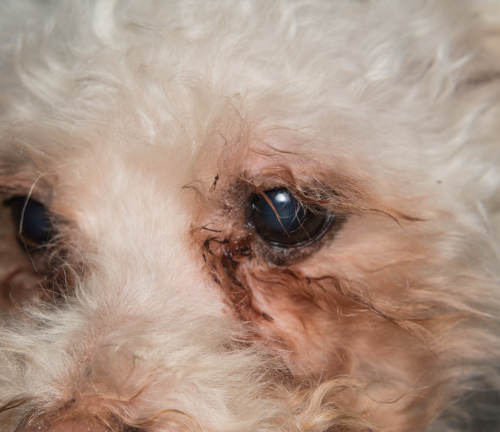
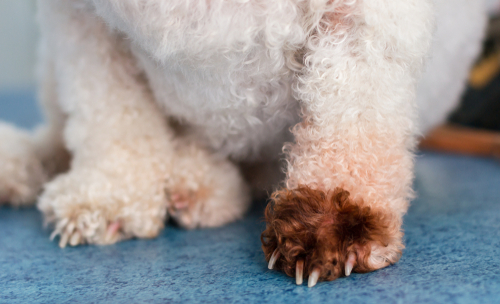
Treatment can include shampoos and topical creams, though vets should aim to determine why this fungus is over-growing. We would be on the lookout for underlying allergies or immune suppression.
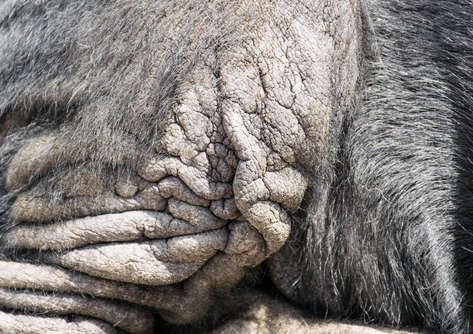
View more pictures of yeast skin infections in dogs.
3. Nasal Aspergillosis
A fungal infection in the nose can lead to signs such as chronic sneezing, bloody discharge from the nose and nasal swelling. Treatment will usually mean infusing the nasal cavity with liquid anti-fungal medicine while the dog is under anaesthetic. Frustratingly, this disease is not always easily cleared and some dogs need prolonged therapy. You can view this picture on CloudFront showing a close up of a dog’s nose with aspergillosis.
How do I know if my dog has a fungal infection?
Key signs
When a fungus is involved, there is frequently a musty or stale smell and the skin and fur can feel greasy. Other signs of a fungal skin infection can include:
- fur loss,
- skin thickening,
- mild to moderate itching.
When the nose is affected, we may see:
- depigmentation,
- nasal discharge,
- and swelling.
It is impossible to confirm a nasal infection without performing a culture and sensitivity test, and other considerations for these signs would include parasitic or bacterial infections.
Veterinarian diagnosis
As well as a culture and sensitivity test, vets should look into underlying issues that could be making a dog more prone to developing fungal infections. This can include a lowered immunity or skin allergies.
Skin plucks work well to diagnose conditions such as Ringworm. Frustratingly, it can take a week or more for results to come back, as the lab awaits growth of the organism.
Read more
Pictures of yeast infections in dogs
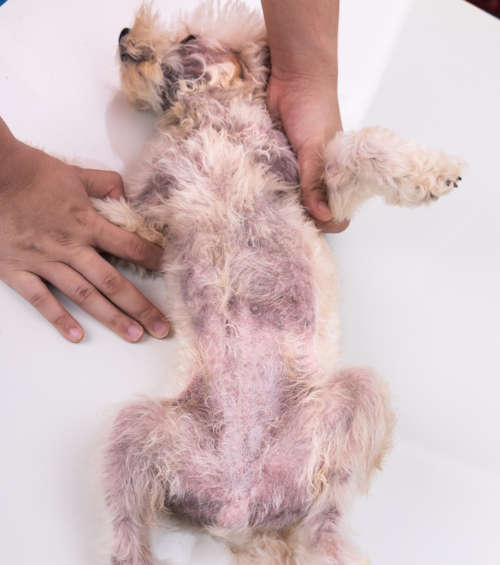
Pictures of skin infections in dogs
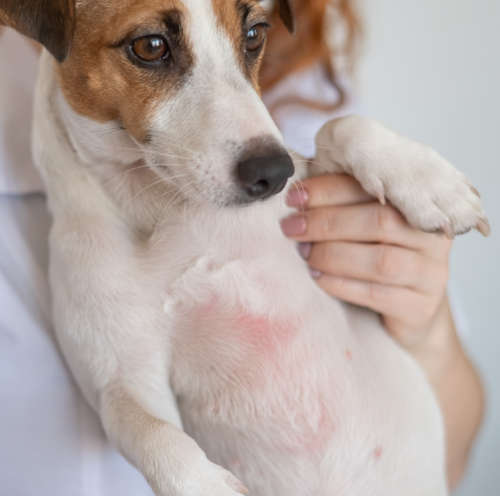
Disclaimer: This website's content is not a substitute for veterinary care. Always consult with your veterinarian for healthcare decisions. Read More.


Be the first to comment